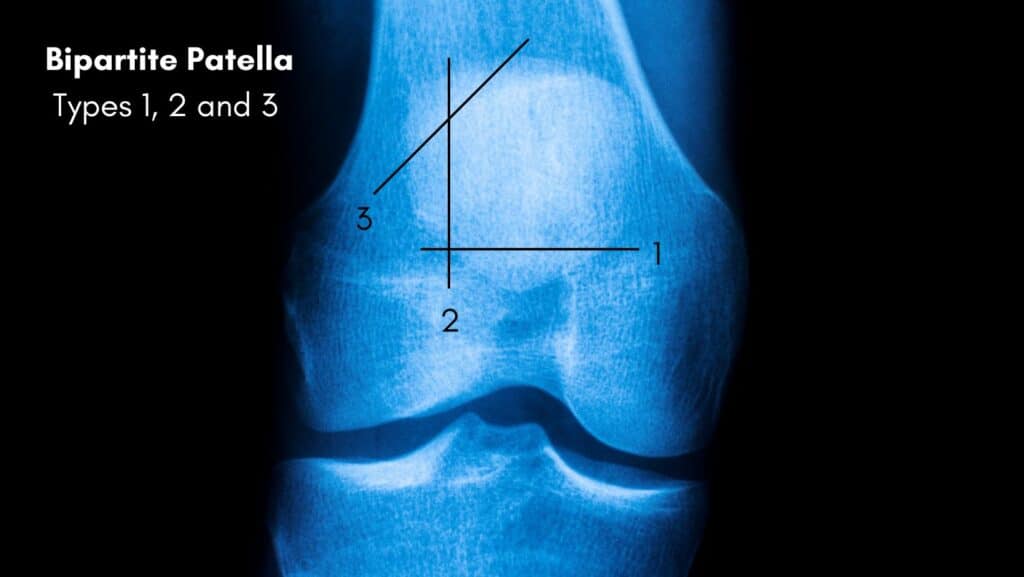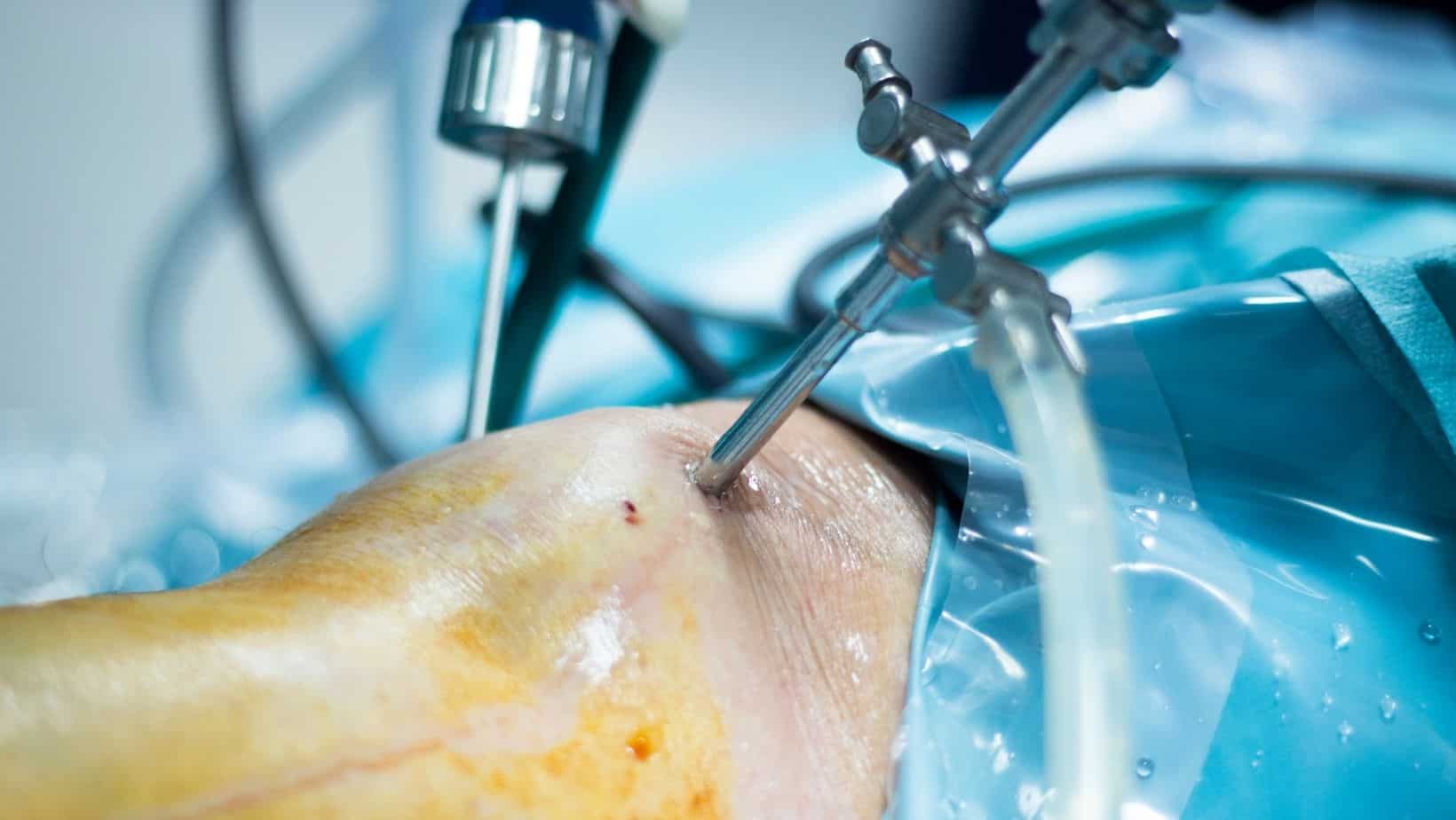Patella Alta
Read More >
Bipartite Patella is a rare condition where the patella bone is made up of two individual bones that didn’t fuse during skeletal maturation. It is a congenital condition affecting about 1-2% of the population. It is often asymptomatic and therefore diagnosed incidentally when the knee is scanned for another reason.
In a few cases, symptoms may be experienced with bipartite patella. Pain will be located at the front of the knee, often felt under the patella, in the upper and outer aspect of the kneecap. In severe cases, the knee may swell and the patella may be unstable. Pain and instability will be made worse with deep squatting, twisting, and high-level sport.
Other causes of anterior knee pain are: Patellofemoral Pain Syndrome, Chondromalacia Patella, Patellar Tendonitis or Hoffa Fat Pad Impingement.

5% of cases
Inferior pole
20% of cases
Lateral margin
75% of cases
Superolateral pole

If bipartite patella is symptomatic then treatment is needed. In acute cases, rest and ice are the first treatments to reduce pain and settle the irritation. If symptoms persist then it may be helpful to see a physical therapist for some advice of rehabilitation exercises. They will be able to assess you and see if your biomechanics may be contributing to pressure through the patellofemoral joint.
In some cases, if the patella is unstable wearing a knee brace may be advised. Here are some recommendations for knee braces: Knee Hyperextension Brace, Brace for Runners Knee, and Fractured Patella Knee Brace.
If these strategies and exercises are not reducing your pain and you are struggling to make progress, you may be recommended to take see a specialist doctor. They may recommend anti-inflammatory medications or a steroid injection to reduce inflammation in the knee.
These may have a quick result to reduce pain and inflammation but this may be short lasting. Often the doctor will recommend that you use this window of opportunity to get on with your physical therapy that will help you in the longer term.
Surgery is reserved for cases of continued pain and dysfunction when other treatments have been exhausted. The 3 most common surgical approaches are:
Excision: This is the most frequent surgical approach which involves the removal of the small additional fragment of bone.
Lateral release: This is the release of tissues to the outside of the knee, the lateral retinaculum, or vascular lateralis.

This is not medical advice. We recommend a consultation with a medical professional such as James McCormack. He offers Online Physiotherapy Appointments for £45.
Related Articles:
Knee Hurts Going Down Stairs
Sharp Stabbing Pain in Knee Comes and Goes
Knee Pain Location Chart